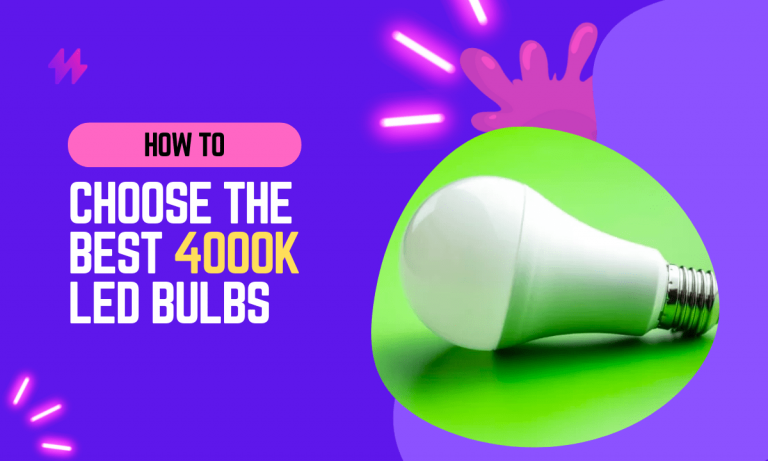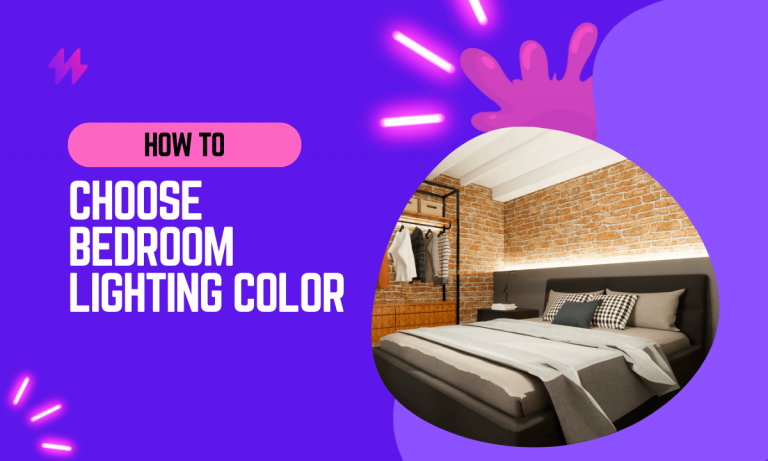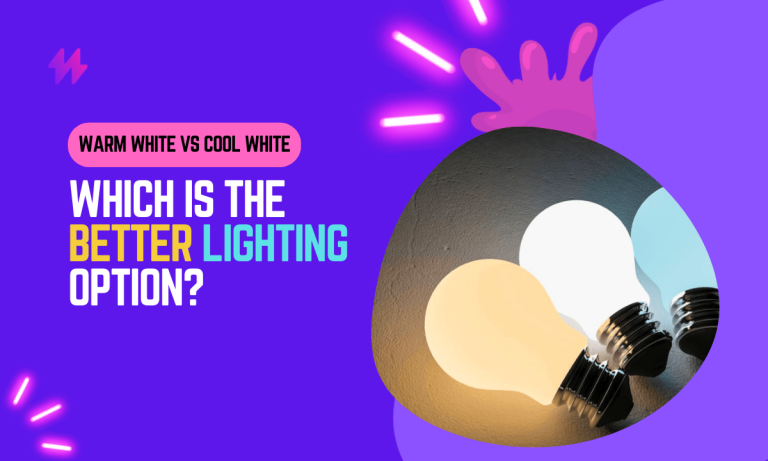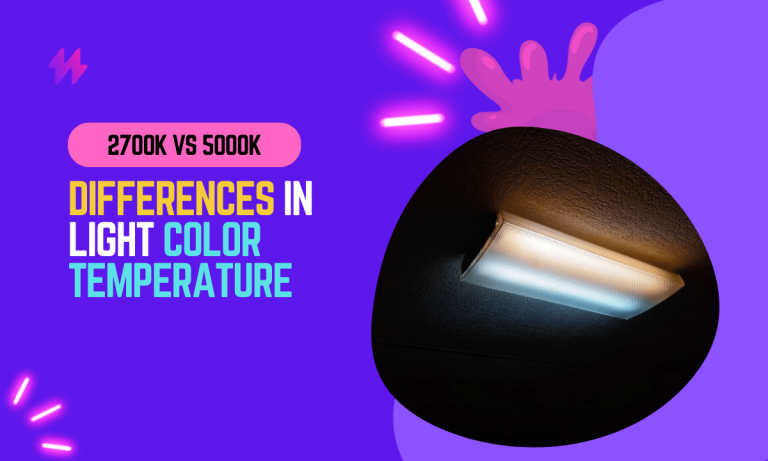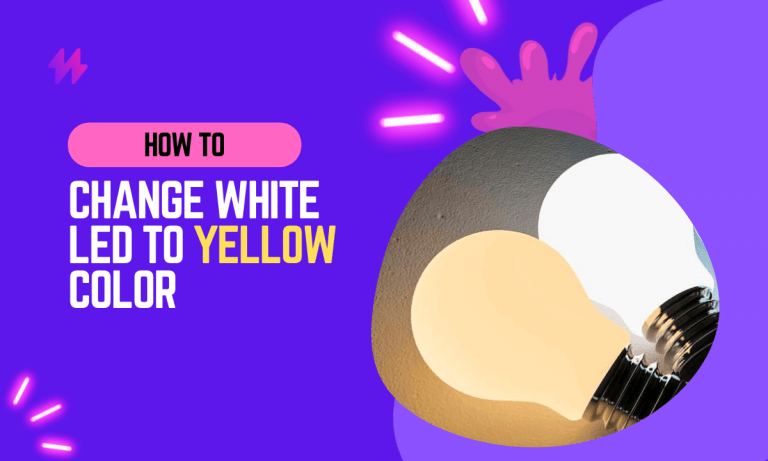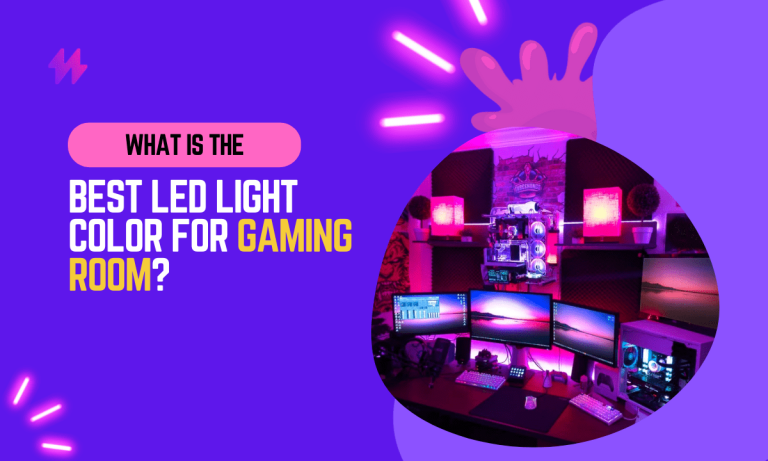5000K vs 6500K Lighting: Which is the Best Light Color?
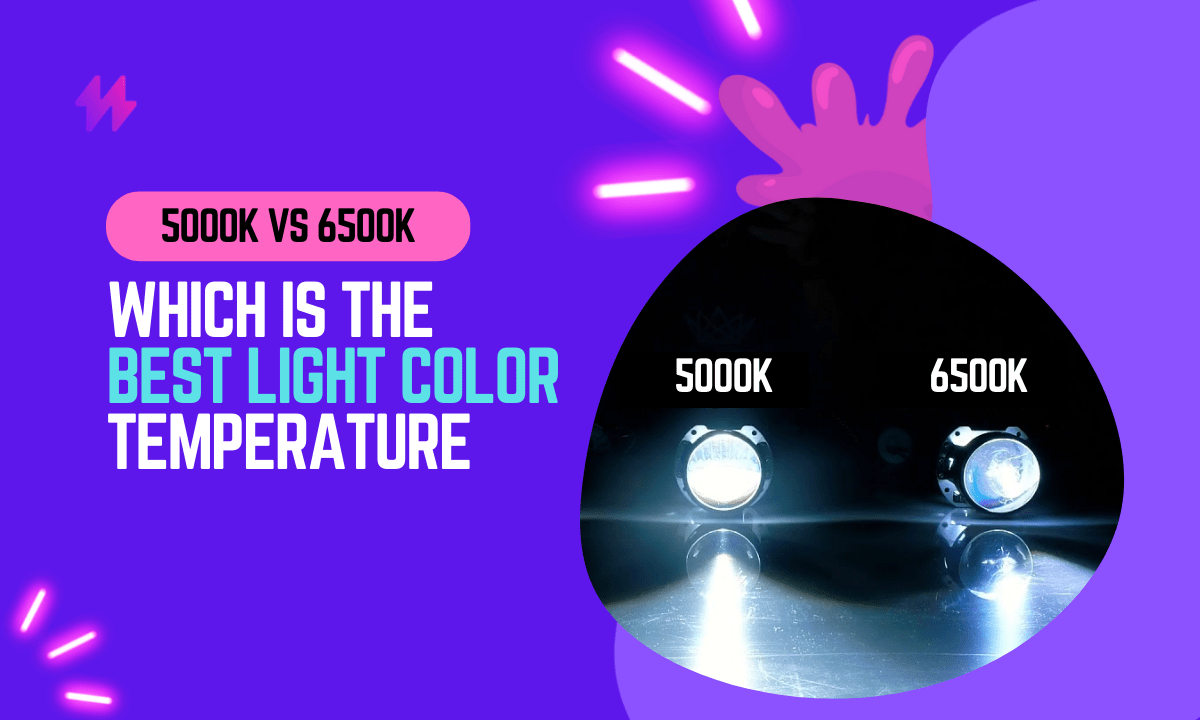
Lighting is an essential element that can make or break the ambiance of a room. It can set the mood, enhance the atmosphere, and affect productivity. Choosing the right lighting for your space is crucial, and one of the most important factors to consider is color temperature.
Color temperature refers to the color of light that is emitted from a light source, measured in Kelvin (K). The higher the Kelvin rating, the cooler or bluer the light appears, while lower Kelvin ratings produce a warmer or yellower light.
Two of the most common color temperatures used in lighting are 5000K and 6500K. In this blog post, we will compare and contrast these two lighting options to help you determine which is the best choice for your needs.
When deciding between 5000K and 6500K lighting, it’s important to consider how each option will impact the overall light quality and ambiance in your space. Utilizing LED lights or incandescent light bulbs can both provide suitable color temperature solutions, but the choice will ultimately affect the perception and practical usage of different residential and commercial lighting applications.
5000K vs 6500K Lighting: Which is the Best Light Color?
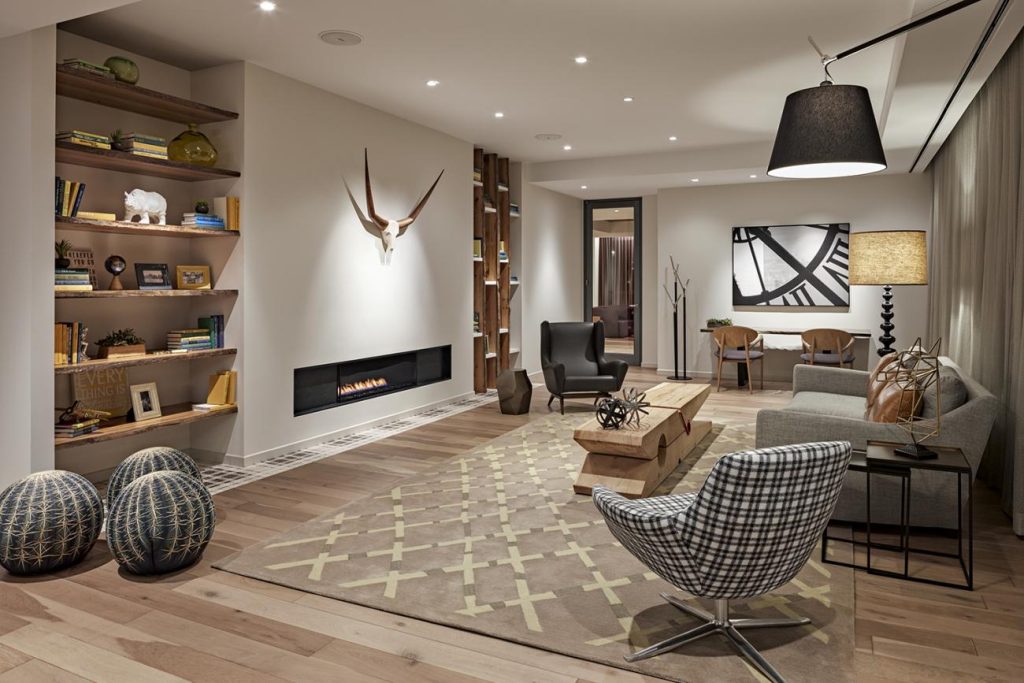
5000K lighting is a type of cool white light that has a slightly blue tint. This type of lighting is commonly referred to as “daylight” because it mimics natural daylight. Daylight is typically around 5000K-6500K, which is why 5000K lighting is ideal for indoor spaces that require bright white and crisp lighting.
In addition to enhancing the overall ambiance of a space, the choice between 5000K and 6500K lighting can play a significant role in energy efficiency. For projects that call for stylish lighting solutions, understanding the nuances of different color temperatures is essential to achieve the desired illumination while minimizing glare.
Benefits of Utilizing 5000K Lighting in Your Space
- Promotes productivity: 5000K lighting has been shown to promote alertness and productivity, making it ideal for workspaces such as offices, studios, and workshops. The bright, crisp light can help to reduce eye strain and headaches, allowing you to work for longer periods of time without feeling fatigued.
- Enhances color accuracy: 5000K lighting provides a neutral white light that enhances color accuracy. This makes it ideal for spaces where color accuracy is important, such as art studios, photography studios, and makeup rooms. With 5000K lighting, you can see colors more accurately, which can help you to make better decisions when it comes to color coordination and matching.
- Creates a modern and clean look: 5000K lighting provides a cool and modern look to any space. It creates a crisp, clean, and refreshing atmosphere, which can make your space feel more modern and up-to-date.
- Provides a sense of security: 5000K lighting is ideal for outdoor spaces such as parking lots and garages because it provides a sense of security. The bright and crisp light can help to deter potential intruders and make people feel safer when walking through the area.
Disadvantages of 5000K Lighting in Your Space
- Can appear too bright: 5000K lighting can be too bright for some people, especially in spaces where a softer or warmer light is desired. This can create a harsh and sterile environment, which may not be ideal for spaces such as living rooms or bedrooms.
- Can be too cool for some settings: While 5000K lighting is ideal for workspaces and outdoor areas, it may not be the best choice for spaces such as restaurants or cafes, where a warmer and more inviting atmosphere is desired.
Understanding 6500K Lighting Color Temperature: Advantages and Disadvantages

6500K lighting is a type of cool white light that has a bluish tint. This type of lighting is commonly referred to as “natural white” because it closely resembles the color temperature of natural daylight. This makes it ideal for spaces that require bright and natural-looking light.
Choosing between 5000K and 6500K lighting is critical, especially for lighting projects that rely on proper color rendering and clarity. Whether for architectural lighting or security lighting, understanding how each color temperature affects the ambiance can lead to more effective lighting plans and enhance usability.
Benefits of Incorporating 6500K Lighting into Your Space
- Provides a natural-looking light: 6500K lighting provides a bright and natural-looking light that is similar to daylight. This makes it ideal for spaces such as photography studios and workshops, where color accuracy and natural lighting are important.
- Enhances contrast and visibility: 6500K lighting enhances contrast and visibility, making it easier to see details and distinguish colors. This makes it ideal for spaces such as laboratories and factories, where precision and accuracy are important.
- Promotes a sense of alertness: Like 5000K lighting, 6500K lighting promotes a sense of alertness and productivity. This makes it ideal for workspaces such as offices and classrooms, where people need to stay focused and alert.
- Ideal for outdoor lighting: 6500K lighting is ideal for outdoor lighting because it provides a bright and crisp light that enhances visibility and promotes safety.
Disadvantages of 6500K Lighting: A Comprehensive Overview
- Can appear too cool: 6500K lighting can be too cool for some people, especially in spaces where a warmer or softer light is desired. This can create a sterile and unwelcoming environment, which may not be ideal for spaces such as living rooms or bedrooms.
- May affect sleep: Exposure to bright and cool light can affect your circadian rhythm and make it difficult to fall asleep at night. This makes 6500K lighting less ideal for spaces such as bedrooms and relaxation areas.
You may also like: 4000K vs 5000K LED Color Temperature Comparison
When selecting the perfect lighting, it’s important to understand that the color temperature you choose can significantly affect your space’s light appearance and usability. For instance, 5000K lighting can create a bright daylight kind of atmosphere, while 6500K offers a more pronounced blue-white light that can be ideal for outdoor lighting or modern lighting projects, enhancing overall clarity and reducing glare. It’s essential to consider how the right color temperature, such as blue wavelengths found in cooler lights, can contribute both to the aesthetics and functionality of your lighting design.
5000K vs 6500K Lighting: A Detailed Comparison of Color Temperatures
| Kelvin Color Temp | 5000K | 6500K |
| Lighting Appearance | Daylight | Natural White |
| Room Ambience | Warm and Welcoming | Energetic and Invigorating |
| Best Rooms | Entryway, Outdoor Areas, and Bathrooms | Garages, Basement, Workshop Areas |
| Best Fixtures | Overhead Lighting, Vanities, and Accent Lamps | Security Lighting, Task Lighting, and Shop Lighting |
When it comes to choosing between 5000K and 6500K lighting, it’s important to consider the specific needs of your space. Here are some key differences between the two types of lighting:
Choosing between 5000K and 6500K lighting can greatly affect the ambiance and functionality of various applications in your home or business. Understanding the benefits of both colors will help you select the appropriate bulbs, whether you’re considering cabinet lighting applications, streetlights, or decorative options such as led strip lights or neon lighting.
Understanding Color Temperature: A Comprehensive Guide to 5000K and 6500K Lighting
The main difference between 5000K and 6500K lighting is the color temperature. While both types of lighting are considered cool white, 5000K lighting has a slightly warmer tone with a slight blue tint, while 6500K lighting is cooler with a stronger blue tint.
Choosing the right lights not only influences the aesthetic of the space but also affects the practicality, especially regarding tasks that rely on visual clarity, such as reading or cooking. When considering options, you might find the right light for specific residential lighting applications with an appropriate color temperature that optimizes both comfort and visual effectiveness.
Brightness: A Comparative Analysis of 5000K and 6500K Lighting
Both 5000K and 6500K lighting are bright and crisp, but 6500K lighting is slightly brighter and more intense than 5000K lighting.
Choosing the optimal lighting is crucial for both aesthetics and functionality, particularly when considering options such as fluorescent bulbs or traditional incandescent bulbs. For lighting applications like cove lighting or outdoor settings, understanding the distinctions between cooler color temperatures and warmer colors—like warm candlelight—can significantly enhance usability and comfort throughout your space.
Applications of 5000K vs 6500K Lighting: A Comprehensive Guide
5000K lighting is ideal for indoor spaces such as offices, studios, and workshops, where bright and crisp lighting is needed. It’s also great for outdoor spaces such as parking lots and garages, where security is a concern. 6500K lighting is ideal for spaces that require natural-looking light, such as photography studios and laboratories, and for outdoor areas where brightness and visibility are important.
5000K lighting is a popular color temperature that provides a bright, ultra-bright cool light, ideal for enhancing productivity in spaces like offices and workshops. Conversely, 6500K lighting emits a cooler blue light that closely mimics natural sunlight, making it suitable for environments such as photography studios that require high color acuity and clear illumination.
Mood and Ambiance: Understanding Lighting Options in Your Space
5000K lighting provides a modern and clean look, while 6500K lighting provides a cooler and more natural look. In terms of mood and ambiance, 5000K lighting can create a more upbeat and energizing atmosphere, while 6500K lighting can create a more calming and relaxing atmosphere.
When selecting the perfect lighting for your space, it’s crucial to consider not only the aesthetics but also the impact on usability and energy efficiency. The debate of 5000K vs 6500K lighting: which is the best light color often leads to personal preferences, but understanding the implications of light color temperatures can greatly enhance environments like yoga studios or outdoor settings.
Understanding Sleep and Circadian Rhythm: The Impact of Lighting Color Temperature
Exposure to bright and cool light, such as 6500K lighting, can affect your circadian rhythm and make it difficult to fall asleep at night. This makes 5000K lighting a better choice for spaces such as bedrooms and relaxation areas.
Also read: 2700K vs 3000K – How to Choose Lighting Color?
The choice between 5000K and 6500K lighting not only impacts aesthetics but also affects circadian rhythms, ultimately influencing how well one can unwind after a long day. When considering the right sauna lights, opting for warmer light can help create a more relaxing atmosphere that is conducive to tranquility and comfort.
Choosing the Right Option: Is 5000K or 6500K Lighting Best for Your Needs?
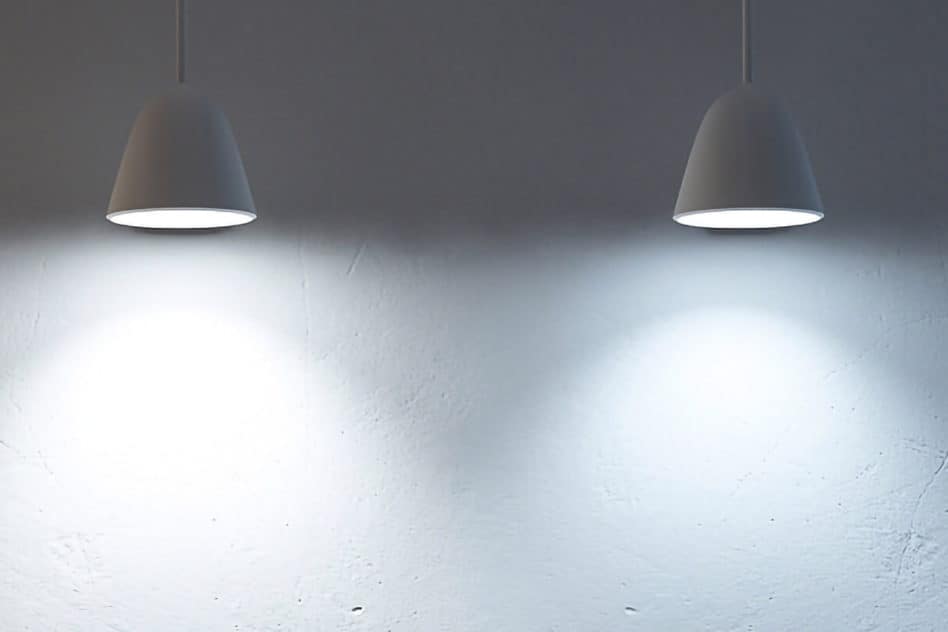
When it comes to choosing between 5000K and 6500K lighting, there is no one-size-fits-all answer. Both types of lighting have their own advantages and disadvantages, and the best choice will depend on the specific needs of your space.
Here are some key factors to consider when deciding which type of lighting is best for you:
Purpose of the space: The purpose of the space will play a significant role in determining the best lighting. For example, if you are looking to enhance productivity in a workspace such as an office or workshop, 5000K lighting may be the better option. If you are looking for natural-looking light in a photography studio or laboratory, 6500K lighting may be the better option.
Color accuracy: If color accuracy is important to you, such as in a photography studio or laboratory, 6500K lighting may be the better option. It provides natural-looking light that closely resembles daylight, which can enhance color accuracy and visibility.
Mood and ambiance: The type of lighting you choose can significantly impact the mood and ambiance of a space. If you are looking for a more calming and relaxing atmosphere, 6500K lighting may be the better option. If you are looking for a more energizing and upbeat atmosphere, 5000K lighting may be the better option.
Personal preference: Ultimately, personal preference will play a significant role in determining which type of lighting is best for you. Some people may prefer the cool and natural-looking light of 6500K lighting, while others may prefer the warmer and slightly softer light of 5000K lighting.
You may also like: 3000K vs 4000K Color Temperature Lighting Difference
When choosing between 5000K and 6500K lighting, it’s essential to consider the impact of color temperatures on usability, which is particularly significant in settings that require attentive tasks. For instance, cooler lights like 6500K can enhance details in photography studios, while warmer lights like 5000K can evoke a bright color environment suitable for office productivity, ensuring optimal light consistency for various lighting techniques.
Conclusion: Evaluating 5000K vs 6500K Lighting Options
In conclusion, choosing between 5000K and 6500K lighting depends significantly on the intended application and the environment in which the lighting will be used. Both color temperatures fall within the “daylight” spectrum, but they serve different purposes and create distinct visual effects. 5000K lights produce a bright, crisp white light that closely resembles morning daylight. This quality makes them particularly suitable for environments such as offices, classrooms, and other settings where a clean, invigorating light is needed to enhance focus and productivity. The neutral quality of 5000K light also makes it a good choice for areas where accurate color perception is crucial but where the intense blue of higher color temperatures might be less desirable.
On the other hand, 6500K lighting, which mimics the bright noon daylight, has a cooler, more bluish-white hue. This color temperature is often preferred in design and art settings where a light that closely approximates north-facing natural light is beneficial. Additionally, 6500K is ideal for retail spaces and other environments where a vibrant, very bright light can help make colors pop, which is advantageous for tasks involving intricate details or color matching. However, for residential settings, this intensity of light might not be as comfortable, potentially creating an environment that feels too stark or sterile. Ultimately, the best light color between 5000K and 6500K is determined by balancing the specific needs of the task at hand with the psychological and aesthetic impacts of the light, ensuring that the chosen lighting enhances both the functionality and the mood of the space.
5000K Vs 6500K Lighting: Which Is The Best Light Color | Benefits of Utilizing 5000K vs 6500K Lighting
Choosing between 5000K and 6500K lighting involves understanding their benefits in terms of visibility and clarity, essential for various environments. The 5000K lights yield a more natural daylight color, making them ideal for spaces requiring focus and productivity, such as offices and yoga studios. On the contrary, 6500K lighting offers a cooler, brighter glow, closely resembling natural sunlight at noon, which can enhance mood and energy levels. Both color temperatures exhibit distinct characteristics; the former provides a warm effect while the latter stands out with a pronounced blue tint. Utilizing high-quality options like LED bulbs, including the LED A19 bulb or MR16-style spotlights, can minimize flickering issues and enhance overall color rendering index performance. Whether it’s anti-glare technology to combat light glare or the warmth of traditional incandescent light, understanding these dynamics helps in creating a light-covered room that caters to specific needs and preferences.
5000K vs 6500K Lighting: Which is the Best Light Color | Enhancing Visibility and Clarity
Choosing between 5000K vs 6500K lighting can significantly affect visibility and clarity in various settings. Fluorescent lighting often falls within this spectrum, with many opting for LED strip lighting or anti-glare lights that enhance usability. The specific color temperature can influence how colors are perceived, with daylight colors providing a more vibrant and true representation as compared to warm yellow light from a warm incandescent bulb. Lighting designed with a white color impact can create an environment reminiscent of a bright sunrise, which is particularly beneficial in workspaces or yoga studio lighting, where concentration is key.
Understanding the nuances in light positions and how the color temperature rating influences brightness is essential. The 6500K option is typically brighter and exhibits a more pronounced blue color, while the 5000K lights offer a neutral light that avoids the dull warm glow associated with warmer tones. Choosing the wrong color temperature may lead to issues like LED lights flickering or creating an uncomfortable atmosphere. Balancing cool lights with warmer color whenever possible can enhance comfort while ensuring full brightness, especially in spaces where specific tasks require optimal clarity and focus.
Supporting Productivity and Focus
Proper lighting significantly influences productivity and focus in various environments. The debate on 5000K vs 6500K lighting centers around how each color temperature affects usability. 5000K lights stick closely to natural sunlight, offering a balanced spectrum that enhances clarity and reduces eye strain. This temperature mimics a warm color temperature while remaining sufficiently bright. In contrast, 6500K lighting, often considered the best light color for high alertness, leans towards a cooler tone with a stronger blue tint. This creates a stimulating environment, ideal for tasks requiring high concentration, such as working with halogen bulbs or using flex lights.
Choosing between halogen bulbs and dimmable LEDs can also impact productivity. A recognized color point at 5000K produces usable light that resembles daylight, making it easier for individuals to distinguish colors accurately. The latter temperature, while more pronounced in its blue tint, can lead to discomfort if overexposed, especially when dealing with LED flickering. In spaces where warm lights are preferred, such as during the sunset hours, non-incandescent bulbs may offer a softer, more soothing light without sacrificing focus. Each setting presents unique advantages, making it essential to consider the effects of lighting color when deciding on 5000K vs 6500K lighting.
Color Perception: The Impact of 5000K and 6500K Lighting
The choice between 5000K and 6500K lighting significantly influences color perception in various environments. 5000K lighting offers a balanced illumination, mimicking natural sunlight that varies across the day, thus presenting warm tones and a more neutral appearance. In contrast, 6500K lighting, while still within the cooler spectrum, is brighter with a more pronounced blue tint, making it ideal for situations that require high visibility. The use of MR16 style spotlights can enhance these effects, providing focused lighting that accentuates the differences between these two color temperatures. In the discussion of 5000K vs 6500K lighting: which is the best light color, understanding how these variations impact our perception of colors and objects becomes essential. UV light exposure also plays a role in how colors appear under different lighting conditions, further complicating the decision on which temperature suits specific tasks best.
How Color Temperature Affects Design Choices
Design choices can significantly hinge on the color temperature of lighting used in a space. 5000K vs 6500K lighting: which is the best light color often comes into play when selecting fixtures for environments requiring clear visibility. Both temperatures can emulate natural sunlight, but the cooler spectrum of 6500K tends to create a more vibrant atmosphere. The latter is brighter with a more pronounced blue tint, making it suitable for areas such as offices, galleries, and retail spaces where showcasing colors accurately is essential.
The subtleties of light temperature affect how colors are perceived within a room. While 5000K provides a balanced daylight effect, it may not evoke the same sharpness as 6500K. Designers must consider how natural sunlight varies throughout the day to cater to the intended ambiance. Whether enhancing productivity in workspace design or creating a warm and inviting mood in residential settings, the debate of 5000K vs 6500K lighting: which is the best light color remains crucial.
Differences in Color Rendering between 5000K and 6500K
5000K and 6500K lighting provide distinct differences in color rendering, which can significantly affect how colors are perceived in a space. The former offers a balanced white light that presents colors in a more natural manner, making it suitable for environments where accurate color representation is crucial. In contrast, 6500K lighting, while both in the cooler spectrum, is brighter with a more pronounced blue tint, which can distort colors slightly, leading to a cooler hue in the overall ambiance.
The choice between 5000K vs 6500K lighting: which is the best light color ultimately hinges on the intended use of the lighting. For tasks requiring precise color differentiation—like painting or graphic design—5000K lighting may be preferable. Conversely, 6500K lighting can create a vibrant and energetic atmosphere, ideal for commercial spaces or areas designed to promote alertness and activity. Understanding these differences allows individuals and businesses to make informed decisions based on their specific lighting needs.

